1. Definition: What is Artificial Intelligence? (1a, slide 14)
1.1. Depends in criteria
1.1.1. Success according to human standards
1.1.1.1. Systems that act like humans
1.1.1.1.1. AI is the art of creating machines that perform functions that require intelligence when performed by humans
1.1.1.1.2. Methodology: Take an intellectual task at which people are better and make a computer do it
1.1.1.1.3. Example: Turing test
1.1.1.2. Systems that think like humans
1.1.1.2.1. Today's AI varies greatly from human thinking
1.1.1.2.2. Not very relevant.
1.1.2. Success according to an ideal concept of intelligence: rationality.
1.1.2.1. Systems that think rationally
1.1.2.1.1. Aristotle: What are ‘correct’ argument and thought processes?
1.1.2.1.2. Based on logic
1.1.2.1.3. Problems:
1.1.2.2. Systems that act rationally
1.1.2.2.1. "Doing the right thing"
1.1.2.2.2. Maximize goal achievement given available information.
1.1.2.2.3. Can involve thinking
1.1.2.2.4. Can involve action without thinking -reflexes etc.
1.1.2.2.5. Problems:
2. Tutorials
2.1. Attendance is not assessed
2.2. Made clear that Tutorials will be essential in preparing for the exam
2.3. Assignment progress will be monitored in tutorials.
3. Lectures
3.1. Focus on theory, high level concepts
3.2. Lecture 1
3.2.1. Introduction
3.2.2. Core Aims (1a, slide 6)
3.2.3. Definition: What is intelligence (1a, slide 13)
3.2.4. Summary:
3.2.4.1. Different people think of AI differently.
3.2.4.2. Two important questions to ask are: Are you concerned with thinking or behaviour? Do you want to model humans or work on an ideal standard?
3.2.4.3. In this course, we adopt the view that intelligence is concerned mainly with rational action.
3.2.4.4. Ideally, an intelligent agent takes the best possible action in a situation. We will study the problem of building agents that are intelligent in this sense.
3.3. Lecture 2
3.3.1. Continues on from previous lecture slides (L1b)
4. Misc.
4.1. Unit Outline
4.2. Contact Information
4.2.1. Lecturer(s)
4.2.1.1. Dr. Bao Vo
4.2.1.1.1. [email protected]
4.2.1.1.2. Work Phone 92144756
4.2.1.1.3. Office Location EN 504
4.2.1.1.4. Consultation Times:
4.2.2. Tutor(s)
4.2.2.1. Minyi Li
4.2.2.1.1. [email protected]
4.2.2.1.2. Work Phone 92148775
4.3. Assignment Cover Sheet
4.4. Textbook
4.4.1. Artificial Intelligence: A Modern Approach
4.4.1.1. Russell, S.J., Norvig, P.
4.4.1.2. 3rd edition, Prentice-Hall, 2010. [AIMA]
5. Assessments
5.1. Assignment 1
5.1.1. Released:
5.1.2. Due:
5.1.3. Worth: 20%
5.1.4. GROUP ASSIGNMENT (Pair is allowed)
5.1.5. Marking
5.1.5.1. 50% for code - Java, C or C++ (python, ruby on request)
5.1.5.2. 50% for self assessment/peer assessment, associated report
5.1.6. Content
5.2. Assignment 2
5.2.1. Released:
5.2.2. Due:
5.2.3. Worth: 20%
5.2.4. Content
5.3. Exam
5.3.1. Worth 60%
5.3.2. Must Score at least 50%
5.4. Lectures
6. Topics
6.1. Foundations of AI (1a, slide 23)
6.1.1. History
6.1.1.1. Not Covered In Exam!!!
6.2. Agents
6.2.1. Aka - Intelligent Agents
6.2.1.1. Basically just another name for AI
6.2.2. Agents include human, robots, softbots, thermostats, etc.
6.2.3. An agent can perceive its own actions, but not always it effects
6.2.4. Agent Function
6.2.4.1. If agent perceives something, do something
6.2.4.2. Lecture 1b example (slide 5,6)
6.2.4.3. Not related to implementing logic - hence last 2 functions on slide 6
6.2.5. Agent Program
6.2.5.1. The logic used to achieve the agent functions.
6.2.6. Rationality
6.2.6.1. Rationality != omniscience
6.2.6.1.1. Doesn't know the actual outcome of it's action.
6.2.6.2. Rationality != perfection
6.2.6.2.1. for on expected performance. perfection is based on actual performance.
6.2.6.3. Information Gathering
6.2.6.4. Learn form percepts
6.2.6.5. Agent autonomy
6.3. Environment
6.3.1. Must Be specified to define a rational agent
6.3.2. PEAS
6.3.2.1. Performance
6.3.2.2. Environment
6.3.2.3. Actuators
6.3.2.4. Sensors
